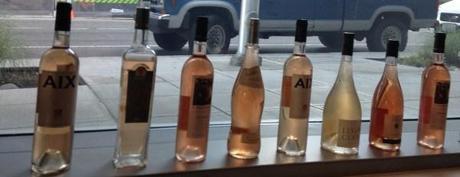
Vins de Provence paired up with Seattle’s Mistral Kitchen for a taste of summer, featuring an array of rosés sure to please any palate.
Vins de Provence paired up with Seattle’s Mistral Kitchen for a taste of summer, featuring an array of rosés sure to please any palate. | Image: L.M. Archer©2014.
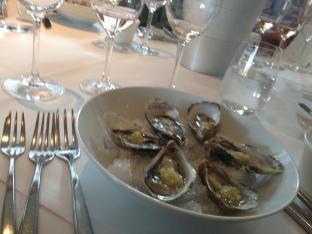
Vins de Provence paired up with Seattle’s Mistral Kitchen for a taste of summer, featuring an array of rosés sure to please any palate, served here with Hama Hama Sea Cow Oysters and Apple Ginger Mignonette. . | Image: L.M. Archer©2014.
Vins de Provence paired up with Seattle’s Mistral Kitchen for a taste of summer, featuring an array of rosés sure to please any palate, served here with Hama Hama Sea Cow Oysters and Apple Ginger Mignonette. | Image: L.M. Archer©2014.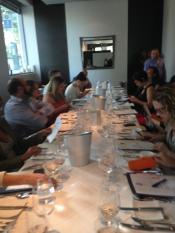
Vins de Provence presented a taste of summer to local media and sommeliers at Seattle’s Mistral Kitchen. featuring an array of rosés sure to please any palate.
Vins de Provence presented a taste of summer to local media and sommeliers at Seattle’s Mistral Kitchen. featuring an array of rosés sure to please any palate. | Image: L.M. Archer©2014.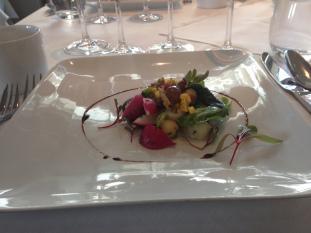
Vins de Provence paired up with Seattle’s Mistral Kitchen for a taste of summer, featuring an array of rosés sure to please any palate, served here with a vegan main alternative to Moulard Duck Breast and Confit, Corn, Muscat Grape, Caramelized Onion Puree.
Vins de Provence paired up with Seattle’s Mistral Kitchen for a taste of summer, featuring an array of rosés sure to please any palate, served here with a vegan main alternative to Moulard Duck Breast and Confit, Corn, Muscat Grape, Caramelized Onion Puree. | Image: L.M. Archer©2014.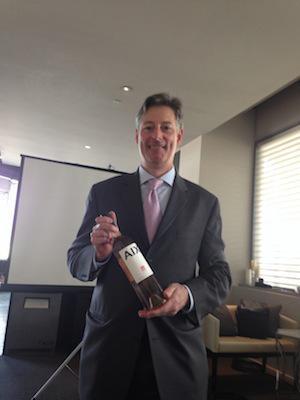
Master Sommelier Eric Entrikin puts Vins de Provence attendees through their wine tasting paces with a taste of summer at Seattle’s Mistral, featuring an array of rosés sure to please any palate.
Master Sommelier Eric Entrikin puts Vins de Provence attendees through their wine tasting paces with a taste of summer at Seattle’s Mistral, featuring an array of rosés sure to please any palate. | Image: L.M. Archer©2014.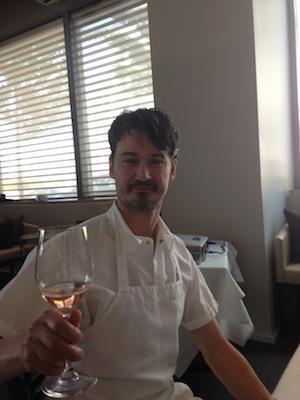
Mistral Kitchen chef/owner William Belickis dazzled Vins de Provence attendees with his culinary delights, featuring an array of rosés sure to please any palate.
Mistral Kitchen chef/owner William Belickis dazzled Vins de Provence attendees with his culinary delights, featuring an array of rosés sure to please any palate.| Image: L.M. Archer©2014.Real men drink rosé.
That’s right. Rosé is the new black. And a pink that men CAN drink- as evidenced at the recent Vins de Provence wine tasting hosted at Mistral Kitchen.
PROVENCE: HISTORY
Blame it on the Phocaeans, who settled the port city of Massilla (modern-day Marseilles) back in 600 BC, bringing with them vines to cultivate, and the birth of winemaking in France.
By 200 BC, Massilla allied with the Roman Empire. The Romans came, saw and renamed the region “Nostra Provincia” (‘Our Province.’) Membership in the Roman Empire had its privileges, earning Massilla the right to export its wines across the vast Roman Empire. By 100 BC, Massilla’s wines grew in stature along the Mediterranean. During this time, winemakers introduced short maceration before fermentation, producing wines of a pale color. These pale wines earned renown as the prestige quaff of aristocrats.
Over the centuries, various vagaries of church and state dimmed Provence’s light as a wine region – until the 14th century, when landed patricians and religious orders acquired and developed vast vineyards in the area. Provence and rosé held court again until the phylloxera epidemic of the late 19th century, which decimated most of the vineyards. A tenacious region, Provence once more re-established itself at the turn of the 20th century.
PROVENCE: PRODUCTION
Today, Provence produces 10% of world’s rose, 35% of all rose in France, and accounts for sustained double-digit sales in US sales over the past ten years.
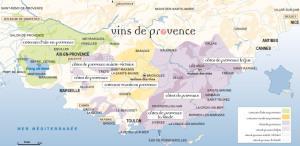
Image: Courtesy Vins de Provence.
Three (3) of Provence’s major appellations produce 96% of the region’s AOP (Appellations of Provence) wines. These include:
Côte de Provence: Provence’s oldest and largest appellation, 85% production is rosé, and 75% of Provence’s total rose production. Côte de Provence’s four other non-contiguous subregions include:
- Côte de Provence Sainte-Victoire
- Côte de Provence Fréjus
- Côte de Provence La Londe
- Côte de Provence Pierrefue
Coteaux d’Aix-en-Provence – Provence’s second largest appellation, 35% rosé. Note: Cabernet Sauvignon introduced here in 1960.
Coteaux Varois en Provence - A chalky, mountainous interior region known for some of Provence’s more powerful rosés.
The balance of Provençal appellations include:
- Bandol: Seaside-facing ampitheatre-shaped vineyards featuring man-made stone walls.
- Cassis: Provence’s oldest AOC composed of terraced limestone cliffs overlooking the sea. 70% white – primarily aromatic Marsanne with resinous, saline, floral and fruit notes.
- Bellet – Terraced single commune above the Var River near Nice, known for its rose-petal aromatic rosés. Note: Only AOC authorized to produce chardonnay in the region.
- Palette – Smallest appellation with strict aging requirements: 8 months for rosés and 18 months for reds: Note: Famous for vin cuit.
- Les Baux de Provence – An organic and biodynamic stronghold straddling both sides of the Alpilles Mountain range. Note: No white production authorized here.
- Coteaux de Pierrevert – Newest, most northern AOC with strong alpine influence. Note: No Bordeaux grapes authorized here.
PROVENCE: TERROIR
Other influences upon Provençal terroir include a balmy Mediterranean climate, which ensures over 3000 hours of sunshine a year. Oh, and a little thing called the Mistral – a cold, dry wind the blows away humidity almost 150 days of the year.
Several mountain ranges punctuate the soils of Provence, dividing the calcareous limestone, clay and sand of the west with the quartz schist of the east. Western soils produce wild resinous herbs known as garrigue, while the east low-growing scrub grows, the vegetation adding a distinct subtext to the flavor profiles of Provencal wines.
These nutrient-poor soils support an abundance of grape varietals, including Grenache, Rolle, Syrah, Mourvédre, Carignan, Cinsault, Counoise, Cabernet Sauvignon, and Tibouren.
PROVENCE: ART OF THE BLEND
Provençal winemakers follow the same short maceration times developed 2600 years earlier, using the direct press method. This means the grapes are pressed immediately after picking to retain freshness and pale color. Rosé is made from red grapes, not a blend of white and red, so winemakers avoid longer skin contact and concomitant darker juice pigmentation.
Complexity develops through blending small-batch, single-variety rosés, then combining them into a final cuvée for the desired aroma, balance, and flavor profiles. Most undergo élevage in stainless-steel tanks, though some winemakers now employ judicious use of oak in some rosés.
Provence rarely employs another method of making rosé, known as saignée. In saignée, a portion of the juice is ‘bled off, and the rest of the juice and skins remain to make red wine.
PROVENCE: TASTING NOTES
Vins de Provence define rosé as a dry wine with the ‘character of a red’ and the ‘crispness of white.’ Designed to pair well with food, Provençal rosés provides versatility and range – as an apéretif, small bites sidekick, or full meal deal. Think of it as the LBD of wine. Pink IS the new black…santé!
Vins de Provence Tasting Menu wines included the following:
1a. Le Provencal 2013 – 14.99. 50% Grenache, 20% Cinsault, 10% Syrah. Low yields, high concentration of flavors. Soils: Sandy limestone. Soft color, fruit notes, mouth feel and finish.
1b. Terres de berne 2013 – 19.99. 50% Cinsault, 40%Grenache, 10% Cabernet Sauvignon. Rose-petal pink, acid plus, tart fruit flavors.
2a. Sables d’Azur Rose 2013 – 11.99. Syrah, Cinsault, Grenache. Soils; Limestone pebbles, clay, sand. Salmon-color, white flowers, red fruits, citrus. Clean, fresh, sharp finish.
2b. AIX Rose 2013 – $20 Grenache, Cinsault, Syrah, Counoise. Soils: Mineral-rich limestone, gravel, clay. 70% direct press, 30% saignée. Apple, mineral notes.
3a. Les Clans 2012 – 65.00. Grenache, Rolle, Syrah, Tibouren, Cinsault. Chalky clay from NE highland area near Fréjus. Triage: 3x. 90% free run, 10% mild press. Barrel fermented 10 months in 600-litre demi-muids. Battonage 2x weekly. Herbal, tannic.
3b. Quat’Saisons 2013 – 24.00. Grenache, Cinsault, Mourvedre, Syrah. Hand picked, sorted. Light press. Light fining, natural sedimentation. Soil: Clay/limestone slopes w/ small stones. Highland area – more inland. Pale strawberry color, stone fruit, citrus.
4. Terra Amata Rose – 11.99. 30% Grenache, 20% Syrah, 15% Cinsault, 15% Mourvedre, 10% Carignan, 8% Rolle, 2% Ugni. 105 Saignee, 65% direct press, 25% old maceration. Aged 4-6 mos. in vat. Soils: Silicious-clay soils. Best bang for the buck – smooth, soft red fruit and citrus flavor.
⚜⚜⚜
Thank you:
Julie A. Peterson, Vins de Provence – US Office
Eric Entrikin, Master Sommelier
William Belickis, Chef/Owner – Mistral Kitchen

